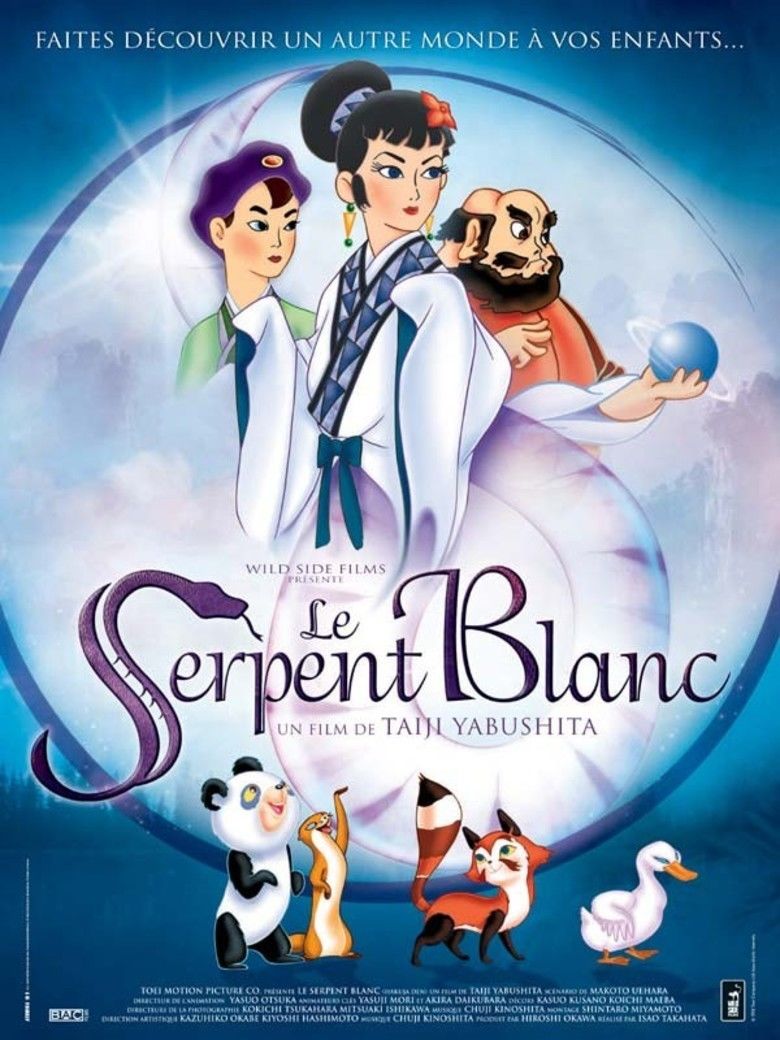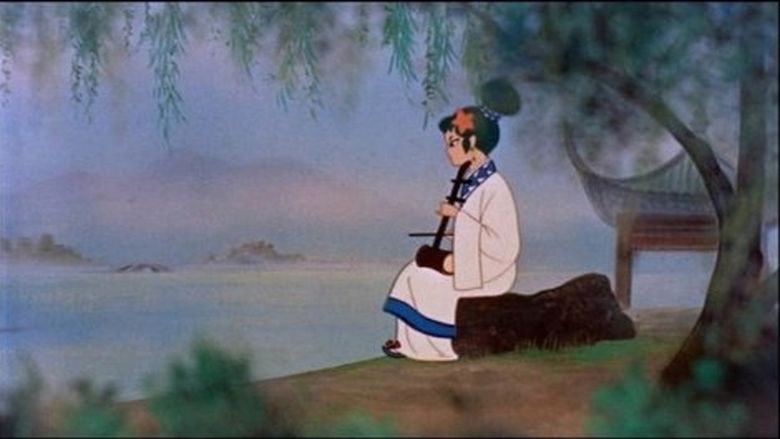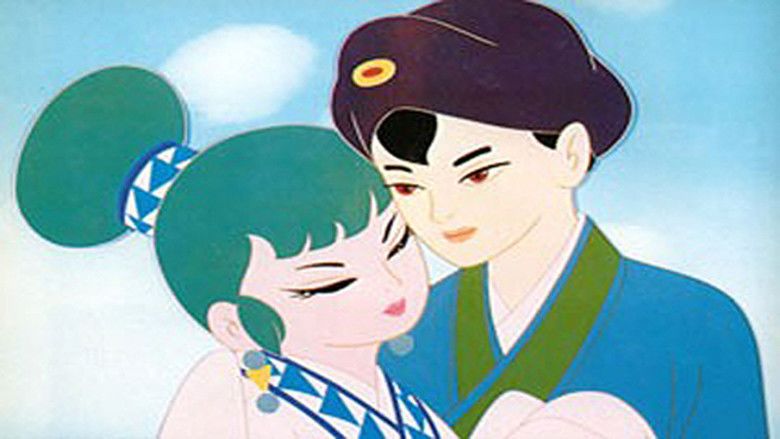The Tale of the White Serpent
7.2 /10 1 Votes
Production Toei Animation Language Japanese | 7/10 IMDb Genre Animation, Family, Fantasy Duration Country Japan | |||||||||||||||||||||||||||||||||
 | ||||||||||||||||||||||||||||||||||
Director Taiji Yabushita
Kazuhiko Okabe Writer Taiji Yabushita , Shin Uehara Release date October 22, 1958 (1958-10-22) Directors Taiji Yabushita, Hiroshi Okawa Cast Hisaya Morishige, Mariko Miyagi Screenplay Taiji Yabushita, Akihiro Yamane, Seiichi Yashiro Similar movies Anime movies, Movies about Japan, Animation Tagline The adventures of a cute little panda, a dragon god and an evil serpent. | ||||||||||||||||||||||||||||||||||
The tale of the white serpent part 7
Panda romps through a series of adventures in a land inhabited by a snake possessing mystical powers.
Contents

The Tale of the White Serpent (, Hakujaden) is the first color anime feature film, released in 1958. It was one of the first three anime films to be released in America, under the title Panda and the Magic Serpent, premiering in 1961, the month after Magic Boy. It is also known variously as Legend of the White Snake, The Great White Snake and The White Snake Enchantress.

As a young boy, Xu-Xian is forced to free his pet, a small snake. Unbeknownst to him, the snake is actually a young snake goddess named Bai-Niang and she is in love with him. Many years later, when they are both adults, the princess is magically transformed into a human and sets out to find her love. But the local wizard believes her to be a vampire, and banishes Xu-Xian from the village in order to save him. Xu-Xian's pet pandas Panda and Mimi set out to save him and bring him, in the process becoming leaders of an animal gang.
Background
The film is essentially an adaptation of the Song Dynasty Chinese folktale "Legend of the White Snake" (???). Shin Uehara adapted the folktale and kept the Chinese-style characters and names. The decision of a Chinese story being used as the concept blueprint came from Toei president Hiroshi Okawa, who wanted to strike a tone of reconciliation with the Asian neighbors.
Given the point in time, the film pushed Japanese animation technology to the limit. The film was a large scale major project, involving a total of 13,590 staff; surprisingly, it only took eight months to finish. And while the film received honors at the Venice Childrens Film Festival in Italy in 1959, it was regarded as a disappointment when released to the United States on March 15, 1961 by Global Pictures. Historically, this film marked Toei Dogas first attempt to follow the example of American feature animation studios and become the so-called "Disney of the east."
The US version made changes to the film such as interpreting the small Red Panda, Mimi, as a cat. In addition, all traces of the Japanese production teams were removed from the credits.
Rintaro, who would later go on to become a well known and respected director of Japanese animation, had his first job in the animation industry (at age 17) as an in-between animator on this film.
Plot
Xu-Xian, a young boy, once owned a pet snake in West Lake until his parents forced him to give her up. Years pass and during a violent storm, the snake magically transforms into the beautiful princess Bai-Niang. Bai-Niang finds Xu-Xian, but the lovers are separated by a local monk, Fa-Hai, who believes that Bai-Niang is an evil spirit. Xu-Xians two Panda pets, Panda and Mimi, try to find Xu-Xian. In the end, Bai-Niang gives up her magical powers and remains in human form to prove that her love for Xu-Xian is genuine.
References
The Tale of the White Serpent WikipediaThe Tale of the White Serpent IMDb The Tale of the White Serpent themoviedb.org
